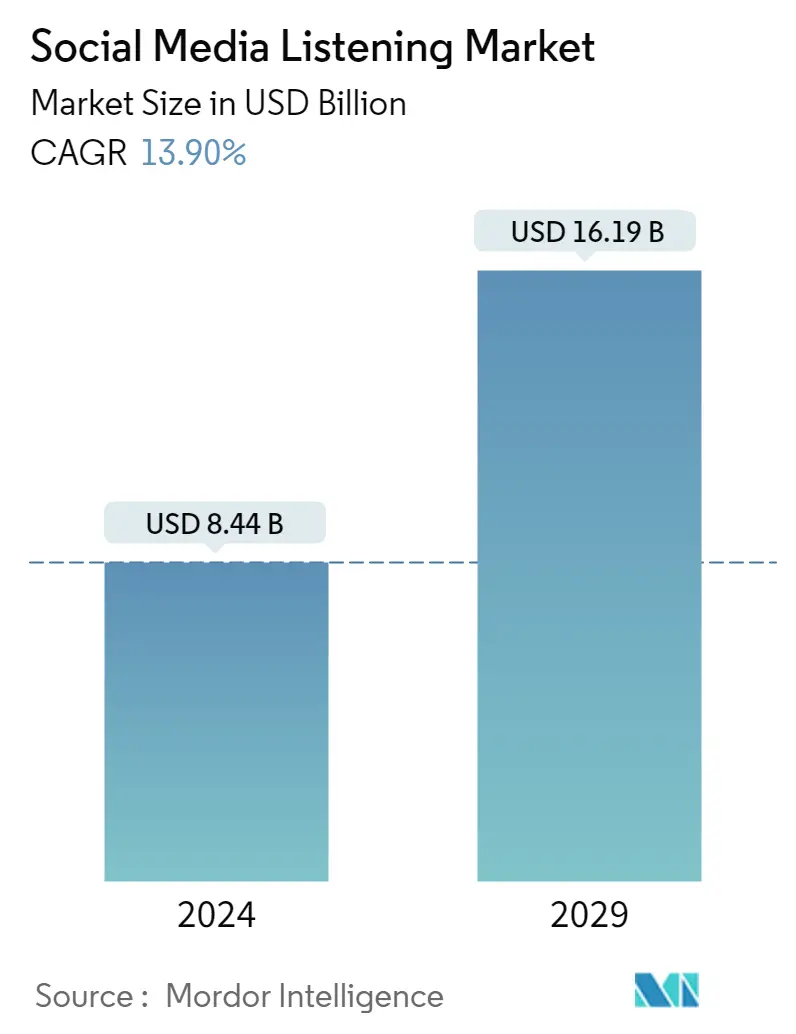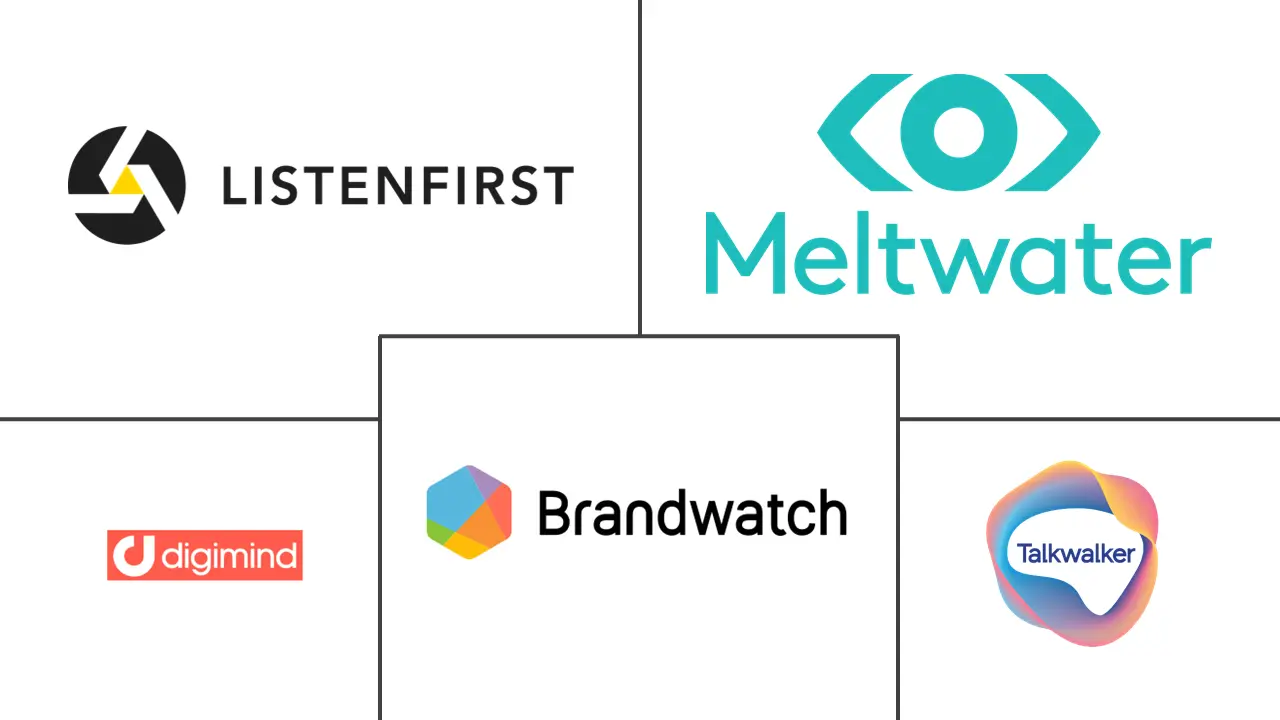Market Size of Social Media Listening Industry

| Study Period | 2019 - 2029 |
| Market Size (2024) | USD 8.44 Billion |
| Market Size (2029) | USD 16.19 Billion |
| CAGR (2024 - 2029) | 13.90 % |
| Fastest Growing Market | Asia-Pacific |
| Largest Market | North America |
Major Players
*Disclaimer: Major Players sorted in no particular order |
Need a report that reflects how COVID-19 has impacted this market and its growth?
Social Listening Market Analysis
The Social Media Listening Market size is estimated at USD 8.44 billion in 2024, and is expected to reach USD 16.19 billion by 2029, growing at a CAGR of 13.90% during the forecast period (2024-2029).
Factors such as increased spending by firms on social media listening tools, government bodies' adoption of the tool, various brands incorporating social listening solutions to establish themselves as market players, and a rise in social media usage are some expected elements to propel the studied market. Further, any firm that wants to stay ahead of the competition must first understand its customers-who they are, how they behave, and what inspires them. One method to accomplish this is to immerse themselves in the most recent trends, demonstrating an understanding of what is happening. Social media listening is a technique that will help businesses connect with their target audience. It will assist the industry in listening to the voice of customers to understand how they communicate with one another and with brands.
- According to Meltwater's survey report on the state of social listening in the previous years, based on more than 650 survey responses from various industry professionals, the company aimed to better understand how companies approach listening activities, how useful they believe such efforts are, and how they think they could be improved. According to survey results, over 61% of organizations have implemented a social listening system and are monitoring for keyword mentions. Almost 80% of brands aim to track brand mentions, with industry keywords and hashtags as the second most prevalent features. Fewer firms follow relevant thinking leaders in their area or employee mentions; this likely suggests that most businesses do not look to display their thought leaders externally, which would naturally place more attention on this component.
- Further, according to the social intelligence lab social listening report of the last year, which polled over 350 social listening professionals worldwide, including those from the United States, the United Kingdom, and countries in Europe, Asia, the Middle East, and Latin America, over 80% of respondents utilized multiple social listening tools. One-third spend more than USD 100,000 on their social listening stack. Most respondents (55%) also stated that they utilize two or three tools. Less than 20% of people exclusively use one tool for their social intelligence needs.
- Government bodies are adopting social listening solutions to analyze situations much faster. For instance, in September last year, the World Health Organization (WHO) created a public health taxonomy to aid in infodemic monitoring and the creation of insights from monkeypox dialogues. The technical document outlines how social listening can be applied to monkeypox talks to yield informational insights for public health responses. Taxonomies are used to better organize and structure analytics, particularly when merging data sources of diverse quality and kind.
- Further, many well-known brands already use social listening to fuel product creation. L'Oréal, for example, uses social listening to identify market trends and discover what consumers want. Although millions of brands rely on social listening to improve their goods, L'Oréal incorporates social listening into some essential brand choices. When L'Oréal was confronted with deciding which hair product to produce, they turned to social media to find the most promising trend. The organization investigated user-generated content and made its consumers' voices heard on social media.
- On the flip side, as each site has different privacy and data collection policies, social listening programs have limited access to data from some. Several prominent social networks also restrict data exchange. As a result, the tools for those platforms can only display a subset of the data they collect. These findings are based on insufficient data. Furthermore, private chat channels such as Discord, Clubhouse, and WhatsApp are inaccessible to social listening technologies. The only way to find out what's going on on these sites is to join as an individual and observe. Further, according to last year's Social Intelligence Lab social listening report, data accuracy and quality tend to be more of an issue for agencies (31% vs. 19% of brands). However, the need for an organizational-wide vision for social listening appears more difficult for brands (29% vs. 18% for agencies).
- The application of social listening approaches for humanitarian and health response, risk communication and community engagement (RCCE), and "infodemic" management increased unprecedentedly during the COVID-19 pandemic. While social listening for humanitarian and health objectives were not new, the pandemic drastically boosted its use because of the difficulties involved with in-person community participation when emergency public health and social measures (PHSM) were in effect. This increasing focus resulted in various social listening outputs created by humanitarian and health organizations and communicated through several Risk Communication and Community Engagement (RCCE) national, regional, and global spaces.

